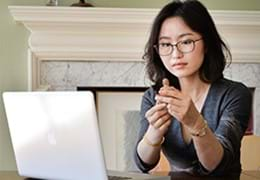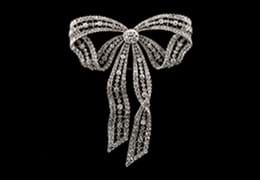Lot 44: Fine Clocks, Barometers and Scientific Instruments including The Michael Finnemore Collection | 9 September 2025
AN IMPORTANT GEORGE I/II EBONISED MERCURY WHEEL BAROMETER
FRANCIS HAUKSBEE, LONDON, CIRCA 1725-35
Estimate: £12,000-18,000 (+ fees)
The siphon tube executed to Hooke's design with 2.5 inch diameter reservoir set within the case superstructure opposing U-bend with counterweighted glass float insert, suspended from the pulley assembly incorporating wheels pivoted within a brass bridge assembly screwed to a baton applied to the inside of the case backboard, the 8.75 inch square brass dial attached to the case from behind via long screws engaging with threaded lugs applied to the rear of the plate, with matted centre applied within 8 inch circular silvered chapter ring calibrated in barometric inches 28-31 divided to hundredths of an inch with every ten increments numbered to outer track, interrupted by signature Francis Hauksbee, Londini Fecit to lower margin, the inner track annotated Stormy, Much Rain/Snow, Rain/Snow, VARIABLE, Fair/Frost, Set'd Fair/Frost, with brass hand and scroll-pierced blued steel recording pointer and the angles applied with Indian mask and scroll cast spandrels, the case with gilt ball finial to the removable domed caddy surmount over stepped double cavetto top mouldings, the tapered trunk with out-swept sides terminating with further double cavetto mouldings above the full-width glazed front door applied with fine raised mouldings around the dial aperture, the shorter base section also with slightly concave tapered sides over further double cavetto moulded collar and inverted ogee-shaped caddy pendant.
100.5cm (39.5ins) high excluding ball finial; 106.5cm (42ins) high, 30cm (11.75ins) wide, 10cm (4ins) deep overall.
Provenance:
The Michael Finnemore Collection of Fine Clocks, Barometers, Scientific Instruments and Mechanical Music; discovered around thirty years ago in a house clearance and purchased by Michael the direct from the clearer.
Francis Hauksbee senior was born in Colchester circa 1660, he moved to London in 1678 and was initially apprenticed as a draper tohis elder brother. He is believed to have run a draper's shop, but by 1701 he was living in Giltspur Street from where he was producing air pumps and pneumatic engines (probably through working as a student to Robert Boyle). It was around this time that Hauksbee was working as Robert Hooke's laboratory assistant. He became a member of the Royal Society on 30th November 1703 and performed demonstrations relating to a new air pump and what was termed 'mercurial phosphorous' (which was a form of electrostatic discharge) just over two weeks later. He was subsequently appointed chief experimentalist working closely with the various 'Curator's of experiments' and was elevated to a Fellow of the Society in 1705. By 1709 Hauksbee had relocated to Wine Court Office, and in 1712 is noted as also being at Hind Court as well as at the Royal Society's premises on Crane Street. He died in 1713 and was succeeded for a short period by his wife Mary.
Francis Hauksbee senior was best known as a maker and inventor of apparatus mostly relating to pneumatic and early electrostatic demonstrations. He also independently discovered Charles's law pertaining to gasses, which states that the volume of a given mass of gas at a fixed pressure is proportional to its temperature. Hauksbee regularly published accounts in the Royal Society's periodical Philosophical Transactions many of which he collated into his own 1709 publication Physico-Mechanical Experiments on Various Subjects.
Francis Hauksbee junior was the nephew of Francis senior. Born in London 1688, the son of John Hauksbee of the Drapers' Company, he was apprenticed to John Marshall and subsequently worked alongside his uncle. By 1712 he had set-upon his own near The Royal Society on Crane Street, forging connections with the mathematician Humphrey Ditton and the controversial natural philosopher and theologian, William Whiston.
On the death of his uncle, Francis junior assumed many of the activities of his forebearer but did not officially join the Royal Society until 1723 when he became 'Clerk and Housekeeper'. In the intervening period he had become established on the lecture circuit working alongside Whiston giving 'A Course of Mechanical and Experimental Philosophy'. Francis Hauksbee Junior subsequently established himself as an inventor and maker of instruments working with John Hadley in the development of the telescope amongst others. He also still periodically undertook experiments at the Royal Society including 'An Experiment, to Show the Cause of the Descent of the Mercury in the Barometer in a Storm'; which was written-up in the 1st January 1753 issue of Philosophical Transactions. He died on 11th January 1763 apparently with instructions left for his stock etc. to be sold-off for the benefit of his larger family.
Through his close association with Robert Hooke and Robert Boyle, Francis Hauksbee senior would have had a deep knowledge with regards pneumatics and barometric measurement. He would have been very familiar with Robert Hooke's seminal 1665 publication Micrographia in which the design for a wheel barometer mechanism, which is fundamentally the same as that of the current lot, was first published. Hooke's notes list the primary benefit of the wheel barometer being the amplification of the scale through the inherent gearing of the pulley allowing even small changes in barometric pressure to be observed. The curious large bulb reservoir (or 'bolt head') to the upper end of the tube is believed to have been intended to serve two purposes. The first was minimise the effect of any air that might make it way up into the top of the tube (due to the comparatively large volume of the void above the column); and the second is to act as a damper by increasing the mass of the mercury moving within the column.
It is highly probable that Hauksbee senior made instruments to this design for demonstration at The Royal Society. Being of an inventive mind he also devised his own design of 'extended scale' barometer or 'baroscope' which he published in the Lexicon Texicum in 1704. This took the form of angle barometer but with the arm projecting from the open cistern end in order to observe the rise and fall of the level at the open end.
Francis Hauksbee junior would have most likely acquired knowledge in this field from his uncle. Indeed it would seem that no extant barometers by Francis Hauksbee senior are known, hence the very few surviving examples signed for Francis Hauksbee are by the younger of the two makers. Of his work there are a group of two to four stick barometers known which include one at Althorp House, Northamptonshire. This example is illustrated in Goodison, Nicholas English BAROMETERS 1680-1860 and exhibits the distinctive feature shared by this group - the provision of two recording dials set within the register plate each side of the tube.
The present lot would appear to be the only surviving wheel or dial barometer by Hauksbee. Indeed it also would appear to be one of the earliest wheel barometers known, with perhaps only two other earlier known examples both being by Thomas Tompion. These were both made for William III's Court and are still in the Royal collection, and are illustrated Symonds, R.W. THOMAS TOMPION, his life and work on pages 246 (Figures 262-63) and pages 248-49 (Figures 266-68). Although differing slightly, both of the examples by Tompion would seem to be of the same basic design as the present lot incorporating an enlarged but to the top of each tube, but this time contained within decorative urn surmounts. Interestingly the proportions of the second are remarkably similar to those of the present lot, suggesting that Hauksbee may have been familiar with this example.
Although restrained in its design the current instrument is very well detailed and particularly elegant. The use of ebonised fruitwood is a characteristic of Hauksbee's work and adds to the 'less is more' aesthetic which is executed so well in the present lot. From an historical context this instrument very neatly bridges the gap between those by Tompion mentioned above, and later examples from the workshop of Justin Vulliamy which first appeared around 1765 (see Goodison page 262-68). As such, it can be described as being of documentary importance and is definitely one of the 'jewels in the crown' of Michael Finnemore's collection.
View page turning catalogue
Auction Details
Tuesday 9 September 2025 | 10.30am BST
Donnington Priory, Newbury, Berkshire RG14 2JE
Browse the auction
Sign up to email alerts
Viewing:
Dreweatts, Donnington Priory, Newbury, Berkshire RG14 2JE
Friday 5 September: 10am-4pm
Saturday 6 September: 10am-3pm
Sunday 7 September: 10am-3pm
Monday 8 September: 10am-4pm
Tuesday 9 September: 9am-10.30am
Further information:
General enquiries: + 44 (0) 1635 553 553 | clocks@dreweatts.com
Press enquiries: press@dreweatts.com













